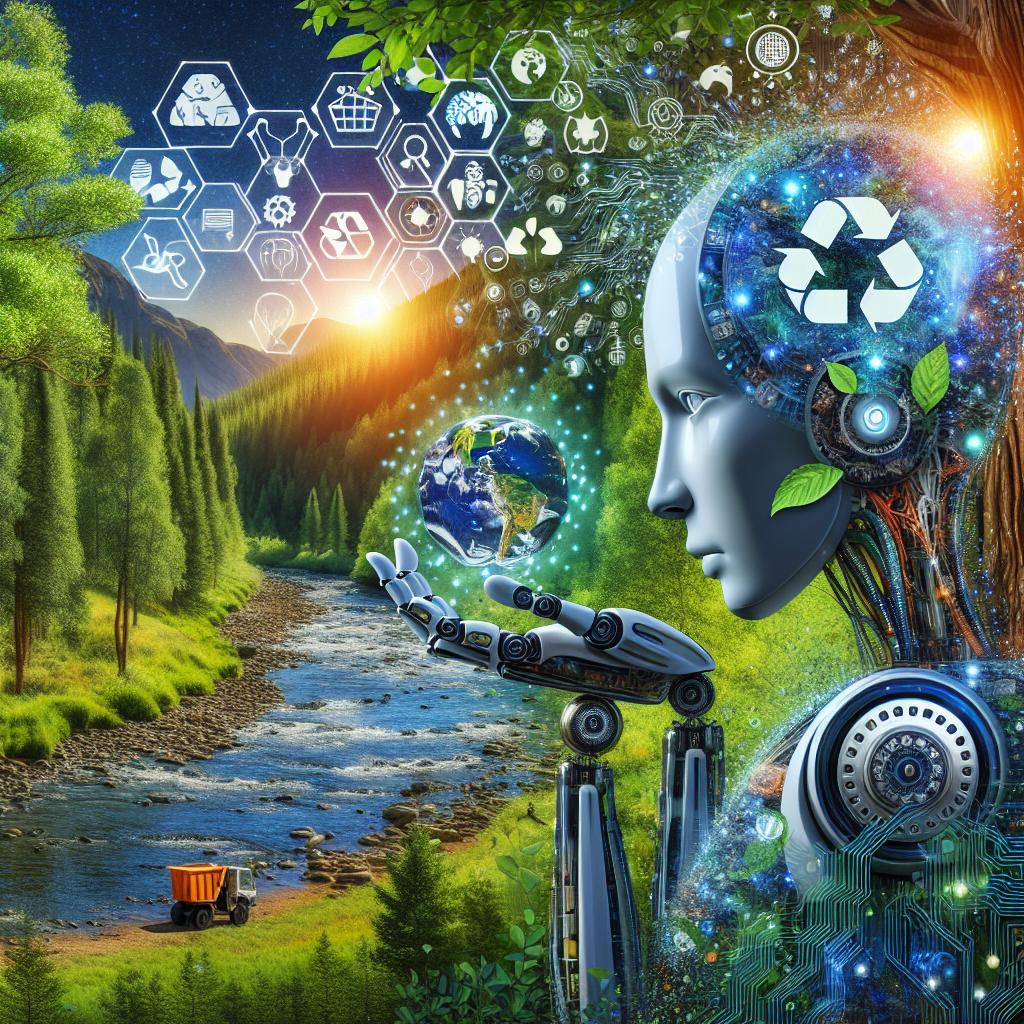The Role of AI Deployment in Environmental Conservation
In recent years, the rapid advancement of artificial intelligence (AI) technology has provided new opportunities for addressing complex environmental challenges. AI deployment in environmental conservation has the potential to revolutionize the way we approach conservation efforts, from monitoring wildlife populations to predicting and mitigating the impacts of climate change. This article will explore the various roles that AI can play in environmental conservation and highlight some of the key benefits and challenges associated with its deployment.
AI for Wildlife Monitoring
One of the most promising applications of AI in environmental conservation is in wildlife monitoring. Traditional methods of tracking wildlife populations, such as camera traps and radio collars, can be time-consuming and labor-intensive. AI-powered tools, such as drones equipped with computer vision algorithms, can greatly improve the efficiency and accuracy of wildlife monitoring efforts.
For example, researchers at Microsoft have developed an AI system called “Project Premonition” that uses drones to collect mosquito samples in order to predict and prevent disease outbreaks. By analyzing the data collected by the drones, researchers can identify areas at high risk of disease transmission and take proactive measures to prevent outbreaks before they occur.
AI for Climate Change Mitigation
Another important application of AI in environmental conservation is in predicting and mitigating the impacts of climate change. AI algorithms can analyze large datasets of environmental and climate data to identify patterns and trends that can help us better understand and predict the effects of climate change.
For example, researchers at Stanford University have developed an AI system called “DeepSolar” that uses satellite imagery and machine learning algorithms to identify suitable locations for solar panel installation. By optimizing the placement of solar panels, the system can help reduce greenhouse gas emissions and mitigate the impacts of climate change.
AI for Conservation Planning
AI can also play a valuable role in conservation planning by optimizing the allocation of resources and prioritizing conservation efforts. For example, AI algorithms can analyze data on species distributions, habitat quality, and other factors to identify areas that are most in need of protection.
By using AI-powered tools to guide conservation planning, organizations can make more informed decisions about where to focus their efforts and maximize the impact of their conservation initiatives.
Benefits of AI Deployment in Environmental Conservation
There are several key benefits associated with the deployment of AI in environmental conservation:
1. Improved Efficiency: AI-powered tools can help automate time-consuming tasks, such as data analysis and monitoring, allowing conservationists to focus their time and resources on more strategic activities.
2. Enhanced Accuracy: AI algorithms can process large amounts of data quickly and accurately, providing more reliable insights into environmental trends and patterns.
3. Cost-Effectiveness: By automating tasks that would otherwise require significant human labor, AI deployment can help reduce the costs associated with conservation efforts.
Challenges of AI Deployment in Environmental Conservation
While the potential benefits of AI deployment in environmental conservation are significant, there are also several challenges that need to be addressed:
1. Data Quality: AI algorithms rely on high-quality data to generate accurate insights. Ensuring the availability and reliability of data can be a significant challenge in environmental conservation efforts.
2. Ethical Considerations: As AI tools become more integrated into conservation efforts, there are important ethical considerations to keep in mind, such as data privacy and algorithmic bias.
3. Technical Expertise: Implementing AI-powered tools in environmental conservation requires specialized technical expertise, which may be lacking in some organizations.
Frequently Asked Questions
Q: How can AI help in monitoring endangered species?
A: AI-powered tools, such as drones equipped with computer vision algorithms, can help monitor endangered species by analyzing data collected from camera traps, satellite imagery, and other sources to track population trends and identify threats to their survival.
Q: What are some examples of AI applications in climate change mitigation?
A: AI applications in climate change mitigation include optimizing the placement of renewable energy sources, predicting the impacts of extreme weather events, and analyzing carbon sequestration potential in different ecosystems.
Q: Are there any ethical concerns associated with the use of AI in environmental conservation?
A: Yes, there are ethical concerns related to data privacy, algorithmic bias, and the potential for AI tools to be used in ways that harm rather than help conservation efforts. It is important for organizations to carefully consider these ethical implications when deploying AI in environmental conservation.
In conclusion, AI deployment has the potential to transform the field of environmental conservation by improving efficiency, accuracy, and cost-effectiveness. By leveraging AI technologies to monitor wildlife populations, mitigate the impacts of climate change, and optimize conservation planning, organizations can make more informed decisions and maximize the impact of their conservation initiatives. While there are challenges to overcome, the benefits of AI deployment in environmental conservation are significant and hold great promise for the future of conservation efforts.

